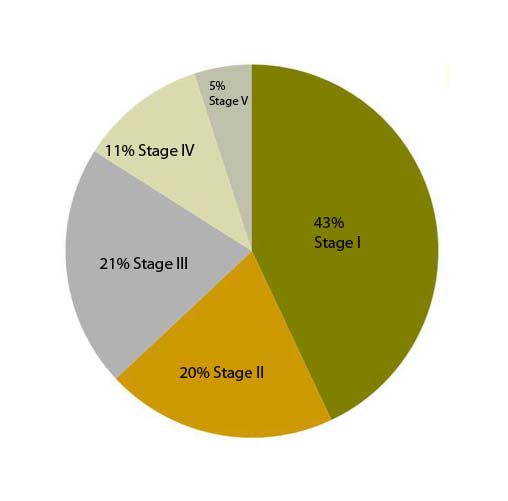The staging system used in the National Wilms Tumor Study (NWTS) is the accepted staging system.
The staging system is based on imaging and surgery.
Staging system used in National Wilms Tumor Study 3 and 4:
I |
Tumor limited to kidney and completely excised
|
II |
Tumor extends beyond the kidney but is completely removed
Any of the following conditions may also exist:
Other features:
|
III |
>1 of the following criteria must be met:
Residual non hematogenous tumor confined to abdomen. Any one or more of the following occur:
|
IV |
Hematogenous metastases
|
V |
Bilateral renal involvement at diagnosis: an attempt should be made to stage each side according to the above criteria on the basis of extent of disease before biopsy
|
Staging and Prognosis:
Prognosis is determined in part by favorable or unfavorable histology. Patients with favorable histology tumors have at least an 80% overall survival rate at 4 years after initial diagnosis. This is even true for patients with stage IV disease. Overall survival for unfavourable histology is only about 20 - 30%.
Frequency of Different Stages at Diagnosis:

Difficulties of Staging
- The renal capsule can become obscured by reactive fibrosis in the perirenal fat. Extension of the tumor beyond the renal capsule can be difficult, or even impossible, to determine.
- The renal sinus is often infiltrated. Vessels in this region probably represent the earliest manifestation of extrarenal spread in the majority of cases.
- There are often difficulties in distinguishing stage I and stage II disease. NWTS traditionally distinguishes stage I from stage II involvement of the renal sinus on the basis of whether or not tumor has invaded beyond the medial margin of the renal outline, the hilar plane. This criterion has been proven unsatisfactory. The position of the hilar plane is almost always in part distorted by tumor.

